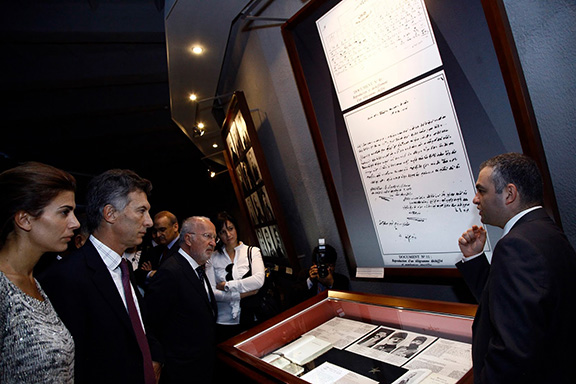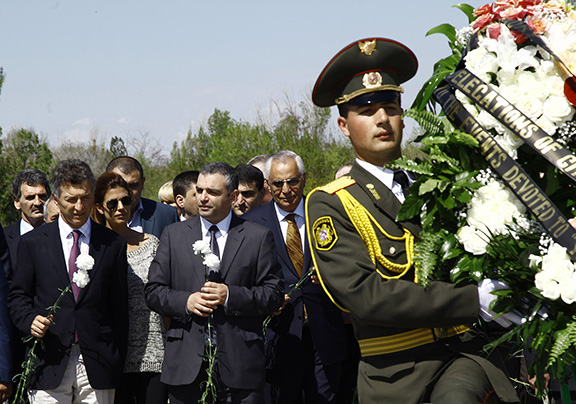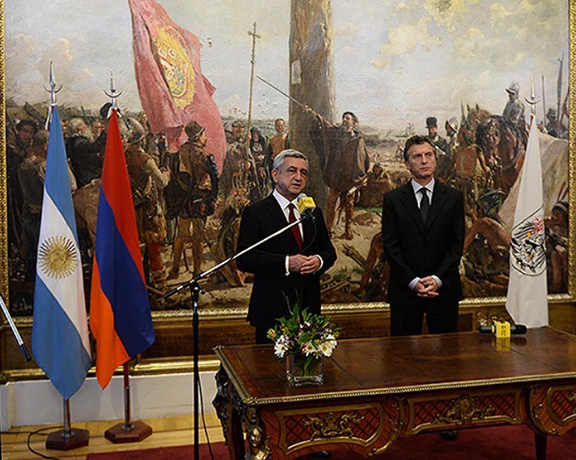BUENOS AIRES (Agencia Prensa Armenia)—On Sunday November 22, the candidate of the Argentine conservative party Cambiemos, Mauricio Macri, was elected president of Argentina by winning a runoff election by three points against Daniel Scioli, the government candidate. Macri has long been a supporter of the Armenian community of Argentina and an advocate for Armenian Genocide recognition in Argentina and internationally.
During his tenure as Chief of Government of the city of Buenos Aires, Mauricio Macri rejected the construction of a bust of Mustafa Kemal Ataturk, after complaints made by the Armenian community and a misunderstanding by local officials. At the time, Turkish Prime Minister Recep Tayyip Erdogan called off a visit to the country citing Macri’s decision.
In April 2012, Macri visited Yerevan for the transfer of the World Book Capital, which had been in Buenos Aires in 2011 and was in Yerevan in 2012. Macri visited the Armenian Genocide Museum and stated that, “Buenos Aires has received thousands of Armenian citizens that, with their tireless work, contributed to the development of Argentina and forged our cultural identity as a country.”
Sometime later in June 2014, the city of Buenos Aires handed over a property for the construction of an Armenian Genocide Museum. This time, the Chief of Staff of the city, Horacio Rodriguez Larreta, said that this museum was, “a way to ensure that mankind will not commit atrocities like those committed almost 100 years ago in Armenia.”
The following month, in July 2014, Macri met with the President of Armenia, Serzh Sarkisian, to whom he handed the keys to the city of Buenos Aires.
In April 2015, during the centenary of the Armenian Genocide, Mauricio Macri published on Facebook a post titled, “100 years of the Armenian Genocide: I do not forget you,” which recalled that “the little purple flower with five petals called ‘Forget me not’ is the symbol chosen by the Armenian community to remember worldwide the more than one million Armenians who perished in the first genocide of the twentieth century,” and noted that “100 years ago, on April 24, 1915, began a bloody persecution of the Armenian people by the Ottoman authorities, which then culminated in the expulsion and death of millions of innocent people.”
“Today is the day in which we remember all the victims. It is they who tell us ‘Forget me not’,” he concluded.
Former Argentine President Nestor Kirchner enacted in January 2007 the Law 26,199, approved by Congress in December 2006, which declares every April 24 as the “Action day for tolerance and respect among peoples,” in commemoration of the genocide against the Armenian people. In September 1987 former President Raul Alfonsin made the first presidential recognition of the Armenian Genocide during a ceremony with the Armenian community.
Source: Asbarez
Link: Mauricio Macri, Genocide Recognition Advocate, Elected President of Argentina



